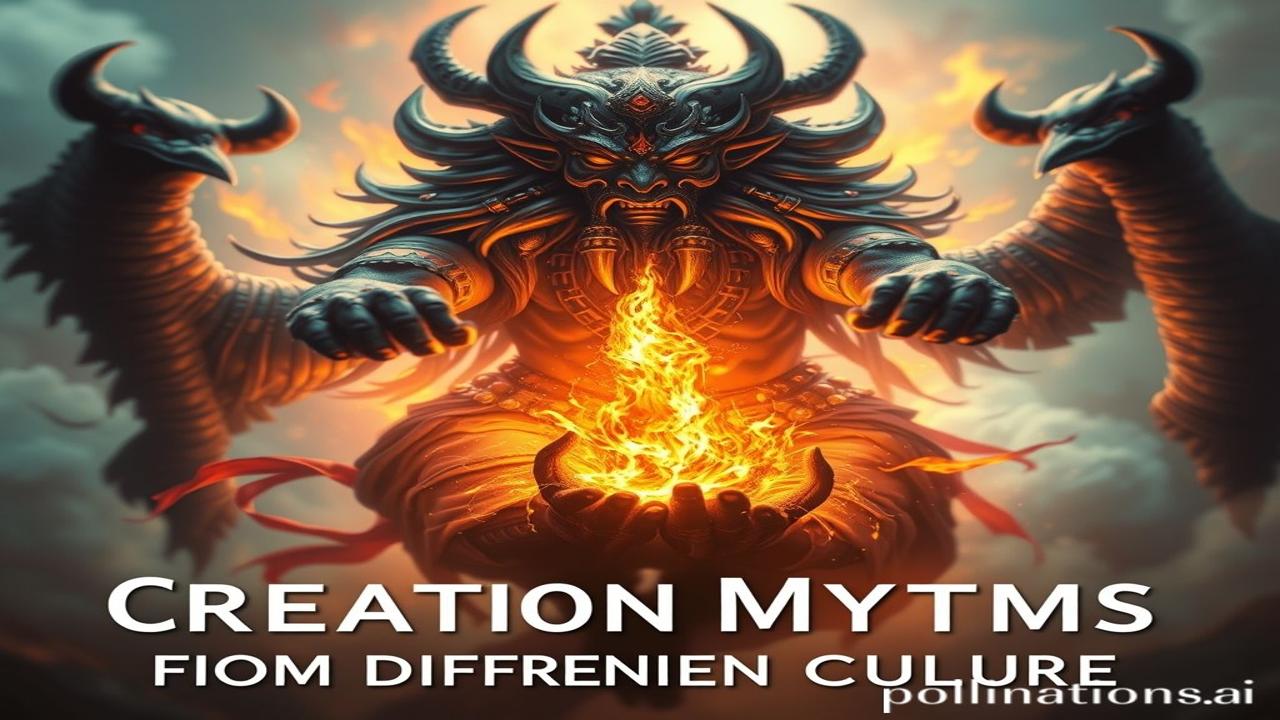Waqt Ki Dhool: Unearthing Creation Myths from Different Indian Cultures
Kabhi socha hai, jab yeh zameen sirf ek sapna thi, tab logon ne duniya ko kaise dekha hoga? Waqt ki dhool mein kuch aisi kahaniyan chhupi hain, jo humein batati hain ki hum kahan se aaye hain. Aaj hum chalenge Bharat ke un alag-alag sanskritiyon mein, jahan creation myths ne duniya ko ek aakar diya. Ready to dive into the stories our ancestors whispered?
Creation Myths: What, When, Where, and Why?
Creation myths, in essence, are stories that explain the origins of the universe, the earth, life, and humanity. Har ek culture ka apna nazariya hota hai, apna tareeka hota hai yeh samjhane ka ki “sab kuch” kaise shuru hua. Bharat, being a land of immense diversity, boasts a treasure trove of these myths.
These myths weren’t just bedtime stories; they were integral to the social, religious, and philosophical fabric of ancient India. From the Vedic period (1500-500 BCE) to the medieval times, different regions and communities developed their unique cosmologies. These myths shaped their worldview, their rituals, and their very understanding of existence. Unki importance yeh thi ki they provided meaning, purpose, and a sense of belonging to the people.
Zameeni Sach: The People and the Myths
Imagine the bustling ghats of Banaras, the serene ashrams nestled in the Himalayas, or the vibrant villages of Tamil Nadu. In each of these places, the creation myths were woven into the daily lives of the people.
The Vedic Creation Story: Purusha Sukta
The Rigveda, one of the oldest scriptures of Hinduism, contains the Purusha Sukta. This hymn describes the creation of the universe from the dismemberment of Purusha, a cosmic being.
Picture this: Priests chanting in ancient Sanskrit, the crackling of the sacred fire, and the hushed whispers of devotees listening intently. The story of Purusha was not just a tale; it was a profound understanding of sacrifice, interdependence, and the interconnectedness of all things. Farmers would offer their harvests, kings would perform elaborate rituals, and every individual would strive to live in harmony with the cosmic order established by Purusha.
Dravidian Creation Myths: The Goddess and the Earth
In South India, many Dravidian traditions have their own creation myths, often centered around powerful goddesses who brought the earth into existence. One popular myth tells of the goddess Bhudevi, who emerged from the primordial waters and shaped the land with her own hands.
Think of a Tamil village, where women adorn the temple with intricate kolam designs depicting the earth and the goddess. The sound of drums fills the air as dancers enact the story of Bhudevi, reminding everyone of the nurturing power of the divine feminine and the sacredness of the land. Ma Rukmini ne aaj naye kapde pehne, kyunki mandir mein utsav tha, aur har koi mata ke ashirwad ke liye utsuk tha.
Northeastern Tales: Nature and Ancestors
The Northeast of India, with its rich tribal cultures, has a multitude of creation myths that emphasize the close relationship between humans and nature. Many of these myths involve ancestral figures or deities who emerged from the earth or the sky to create the world.
Visualize a small village in the hills of Meghalaya, where the elders gather around a bonfire to recount the stories of their ancestors. They speak of how the first humans emerged from a sacred cave, guided by the wisdom of the spirits of the forest. These stories are not just history; they are a living tradition that connects the present generation to their roots and reinforces their respect for the natural world.
Dharohar aur Pehchan: Cultural Significance Today
Even today, these creation myths continue to resonate in our lives. They are reflected in our art, architecture, festivals, and values. The concept of Shakti, derived from the goddess-centric creation stories, is still a vital force in many Hindu traditions. The architectural designs of temples often echo the cosmic structures described in the myths.
In festivals like Diwali, we celebrate the victory of good over evil, a theme that is deeply rooted in the creation narratives. These myths also reinforce the importance of dharma, or righteous conduct, in maintaining cosmic balance. They are an intrinsic part of our Bharatiyata (Indianness) and help shape our modern identity.
Fun Fact or Myth-Buster
Log samajhte hain ki creation myths sirf religious stories hain. Lekin asli sach yeh hai ki they also reflect the scientific understanding (or lack thereof) of the ancient people. These stories often incorporated observations about the natural world and attempts to explain phenomena like the sun, the moon, and the seasons. For example, the concept of cyclical time, prominent in many Indian philosophies, is reflected in the repeated cycles of creation and destruction described in the myths.
Visual and Sensory Layer
Imagine the air thick with the fragrance of incense and sandalwood as priests chant ancient mantras. The temple walls, cool to the touch, are adorned with intricate carvings depicting scenes from the creation myths. The sounds of drums, bells, and conch shells reverberate through the air, creating an atmosphere of awe and reverence. The flickering flames of the oil lamps cast dancing shadows on the faces of the devotees, their eyes filled with wonder and faith.
Antim Vichar ya Uddharan
These creation myths are more than just stories; they are a window into the soul of India. They remind us of our connection to the past, our shared heritage, and the enduring power of imagination.
“Vasudhaiva Kutumbakam” – The world is one family. A simple truth that lies at the heart of many Indian creation stories, reminding us of our interconnectedness and our shared responsibility towards the planet. So, the next time you hear a story of creation, listen closely, for it may hold a key to understanding yourself and the world around you.
